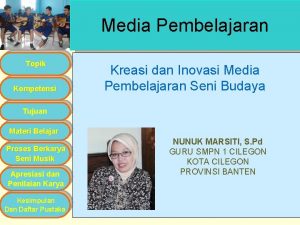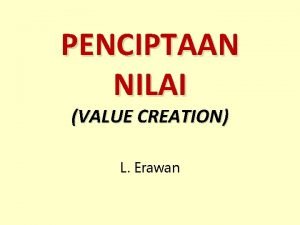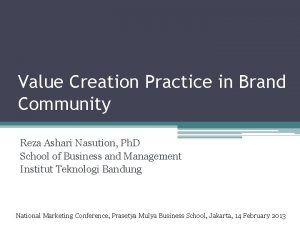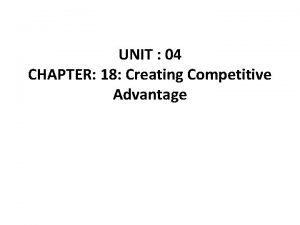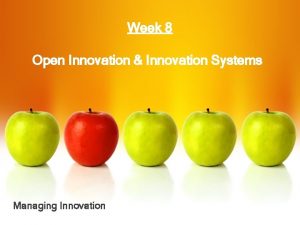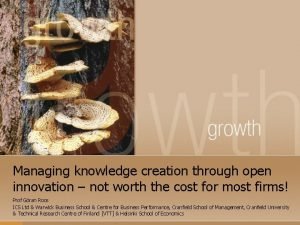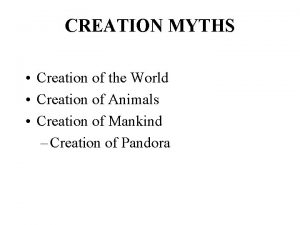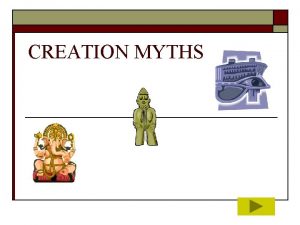Open innovation systems for value creation and knowledge










- Slides: 10

Open innovation systems for value creation and knowledge exchange: Results from the Flemish Le. YLab Dimitri Schuurman @Dimi. Schuurman

Living Labs theoretical positioning

Living Labs as open innovation ecosystems Adapted from Leminen & Westerlund, 2012

Open Innovation Processes • • • Exploitation: Purposive outflows of knowledge to leverage existing technological capabilities outside the boundaries of the organization Exploration: Purposive inflows to capture and benefit from external sources of knowledge to enhance current technological developments Retention: the storage, maintenance and reuse of knowledge over time

Case study: Le. YLab Living Lab

Case study: 6 Living Lab-cases Internal cases • • • Fibre roll-out: successful (user data, domestication research, exploitation possibilities), but time-consuming e. Health case: no match with infrastructure nor panel AV-database case: somewhat successful, delay hindred ‘post’stage

Case study: 6 Living Lab-cases External cases • • • Cloudfriends: perfect match with panel & infrastructure, technology exploitation, no post-phase (yet) Wee. Pee. TV: good match with local character and research socialized panel members, assessment beyond panel, currently finishing project Poppidups: use of local ecosystem (school), assessment and roll-out beyond panel, iteratively finetuned market-ready product

Open Innovation Processes • • • Exploitation: providers looking to exploit their fibre technology (moderate success) Cloudfriends was able to license its technology (success outside LL) provider wanted to sell solution to public organization (no success) Exploration: utilizers get user feedback & lessons from technical integration (success) providers get usage data (success) & look for ‘killer app’ (no success) enabler is looking for new solutions for policy goals (moderate success) Retention: presentations and publications by researchers, providers & enablers (success) predictive model extracted from user loggings (success) iteratively finetuned Living Lab methodology (success)

Lessons learned • • • Living Labs are open innovation networks involving different actors with different goals and motives A thematical focus fosters knowledge transfers and goal allignment between stakeholders with different roles Infrastructure by itself is not enough to attract utilizers Kickstart Living Lab with ‘internal’ cases Infrastructure and local embeddedness facilitate community-building ‘Too many cooks spoil the broth’ or limits to open innovation

Schuurman et al. (2013). Living Labs as innovation systems fostering open and user innovation: lessons learned from the Le. YLab Living Lab. TIM Review November, special issue on Living Labs, forthcoming. Schuurman et al. (2013). Living Labs as open innovation systems for knowledge exchange: solutions for sustainable innovation development. International Journal of Business Innovation and Research (IJBIR), forthcoming. Dimitri. Schuurman@i. Minds. be @Dimi. Schuurman Senior Researcher i. Minds - MICT
 Value creation value delivery value capture
Value creation value delivery value capture Open innovation open science open to the world
Open innovation open science open to the world Knowledge creation and knowledge architecture
Knowledge creation and knowledge architecture Capturing value from customers
Capturing value from customers Media creation and innovation
Media creation and innovation Mysite.socccd
Mysite.socccd Radical vs disruptive innovation
Radical vs disruptive innovation Gvc ratings
Gvc ratings Arti value creation
Arti value creation Reza ashari nasution
Reza ashari nasution Chapter 18 creating competitive advantage
Chapter 18 creating competitive advantage




